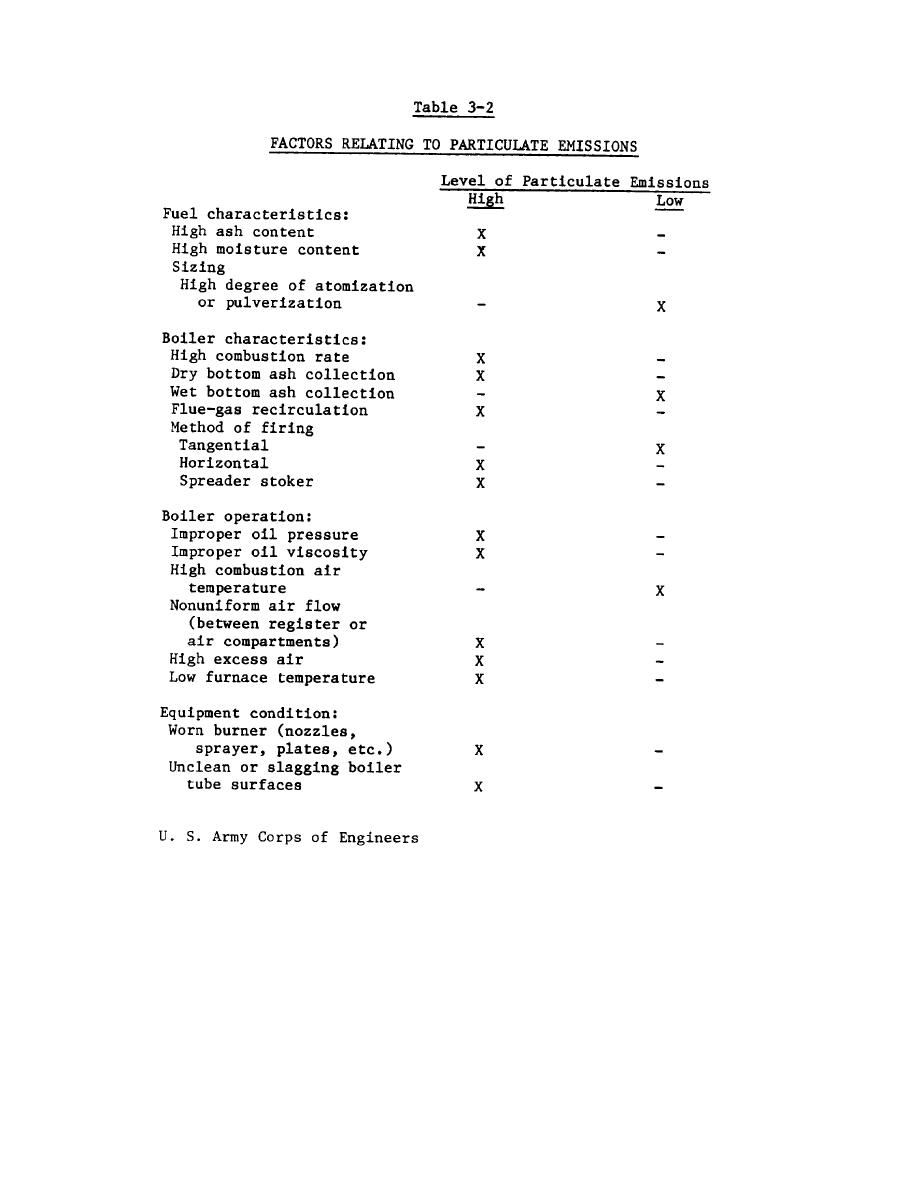
TM 5-815-1/AFR 19-6
affecting NOx emission levels, but they are not
color but is generally observed as gray, black, white,
the only ones. Therefore, while the emission
brown, blue, and sometimes yellow, depending on the
factors presented in tables 3-3, 3-4, 3-5, and 3-
conditions under which certain types of fuels or
6 may not totally reflect on site conditions, they
materials are burned. The color and density of smoke
are useful in determing if a NOx emission
is often an indication of the type or combustion
problem may be present. Factors which
problems which exist in a process.
a. Gray or black smoke is often due to the presence
influence NOx formation are shown in table 3-7.
of unburned combustibles. It can be an indicator that
3-8. Opacity
fuel is being burned without sufficient air or that there
Visual measurements of plume opacity (para 5-3j) can
is inadequate mixing of fuel and air.
aid in the optimization of combustion conditions. Par-
b. White smoke may appear when a furnace is oper-
ticulate matter (smoke), the primary cause of plume
ating under conditions of too much excess air. It may
opacity, is dependent on composition of fuel and effi-
also be generated when the fuel being burned contains
ciency of the combustion process. Smoke varies in
3-4


 Previous Page
Previous Page
